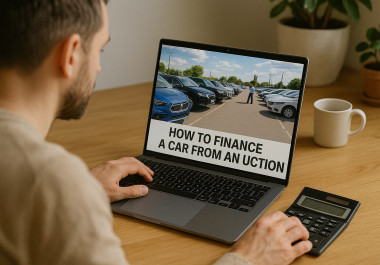A dead battery is a supremely irritating problem for a car to have, but the flipside is that it’s a surprisingly common one – and therefore often reasonably straightforward to resolve. Car batteries can go flat for a wide variety of reasons, but one of the most frequent causes is that the car has been left alone for a long period of time. (After the first national lockdown in 2020 for example, there was a nationwide epidemic of flat batteries, as countless cars had been left in garages and driveways for months on end.)
It's not unusual for used cars to have flat batteries initially, as they can often be left in storage for extended periods too. So whether you’ve bought a car from an online car auction like ours here at RAW2K, or your own car has just unexpectedly run out of power, here’s our easy step-by-step guide on how to get it up and running again.
What you’ll need
Thankfully, the equipment you’ll need isn’t too complicated – you might just need a bit of time, and probably a helpful friend or family member (especially if your battery has died when you’re away from home).
You’ll need:
- A pair of quality jump leads from a respected manufacturer or retailer
- A second vehicle with a fully charged battery
Make sure to avoid using a hybrid or electric car, as these could even potentially damage the battery-drained car. And, we should stress, don’t take risks if you’re not entirely sure what you’re doing. Your owner’s manual should be able to give you some handy pointers, but if you have any serious doubts, we’d always recommend contacting a professional.
Preparing the cars
Just like any car repair, when it comes to dealing with a dead battery, it’s all about safety first. Therefore, the best way to start is…
- Check for damage. If there’s any signs of obvious damage to either the batteries or the jump leads themselves, then don’t proceed any further. The voltages involved are so high that even this kind of light damage could easily lead to an accident that may even prove fatal.
- Remove any rings, metal or jewellery from your person, and if anyone else is helping you, then get them to do the same. If anything metal ends up touching any of the terminals, even briefly, it could lead to a very painful (and potentially even fatal) electric shock.
- Switch off any electrical systems or devices in the stranded car. This includes lights, the radio or CV, as well as sat-navs and any other miscellaneous systems. If possible, it’s a good idea to lower the driver’s side window too.
- Park the second vehicle as close as you can, but crucially, make sure that the two vehicles aren’t actually touching. This can save you a bit of time in making sure that the cables are capable of easily bridging the gap between the two vehicles.
- Double-check that both cars are switched off. The best way to give yourself peace of mind for this is to remove the keys from their ignition and open both bonnets. (Or in some cases the boot, as that’s where some cars keep their batteries.)
Attaching the jump leads
OK, so here’s the moment of truth. Once you’re absolutely sure that both cars have been made safe, you’re now ready to actually start the process of charging up the dead battery.
- Choose the red jump lead, and attach one end to the positive terminal of dead battery. It should be relatively easy to identify by virtue of its red plastic cover, which will generally have a large plus sign emblazoned on it. Then, it’s just a matter of pulling that cover back, giving you access to the terminal. From there, attach the other end of the red jump lead to the positive terminal of the other car.
- Then attach the other black jump lead to the negative terminal of the good battery. The other end of the black jump lead needs to be clamped to a good earth point on the immobile vehicle. It doesn’t need to be anything complex – just a solid metal part of the engine will do.
- Now, you’re ready to start the immobilised car. If it properly starts, it’s best to then leave it running for at least five minutes. From there, simply switch it off, disconnect the negative jump lead, then disconnect the remaining jump leads.
From here, there are two possible outcomes:
- If your car started fine after disconnecting the jump leads, then restart the engine. Ideally you’ll want to fully recharge the battery, which really requires a quality battery charger if you’ve got access to one. The alternator also needs time to properly do its job of charging up the battery, so make sure to drive the car normally for about half an hour, which should put a decent amount of charge into it. The main thing is not to do it in heavy traffic, as the car isn’t going to be able to properly charge itself if it’s just sitting in traffic.
- On the other hand, if the engine doesn’t start even after you’ve disconnected the jump leads, then it’s likely that you have a problem that’s bigger than a dead battery. In this case, you could choose to either contact a mechanic, or alternatively get rid of the car.
If you do end up deciding to dispose of the car, you could simply scrap it. Alternatively, you could even choose to put it up for auction in one of our dedicated online car auctions here at RAW2K. Even if the car is suffering from mechanical damage or a dead battery, you might be surprised at how many people may still be interested in it!
Our online car auctions list thousands of used, salvaged and seized vehicles every week. The vast majority of the vehicles you’ll find online on our website are salvage cars, vans and motorcycles. These salvage cars attract thousands of trade and non-trade customers from around the UK, who bid on them in our fast, easy online vehicle auctions. Why not take a look around, and see what best suits you?
And of course, if you’ve got any questions or need any advice, you can always check out our help centre, or alternatively simply contact us. We’re here to help!




